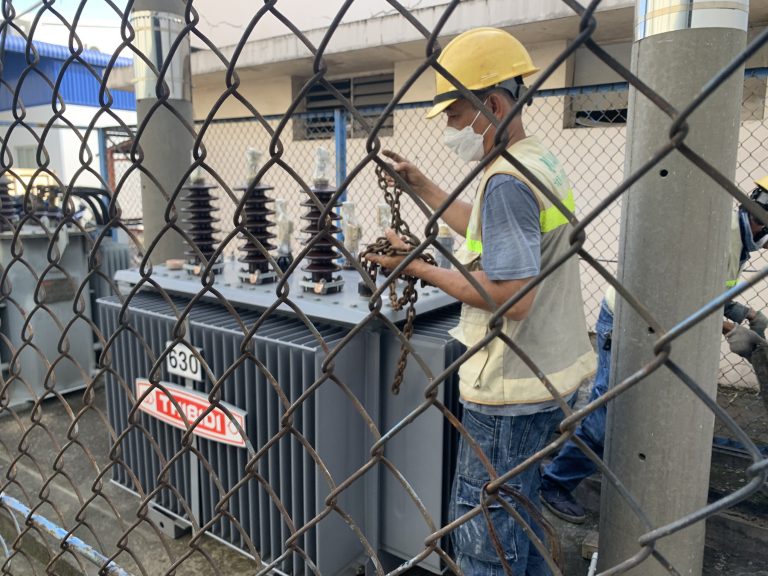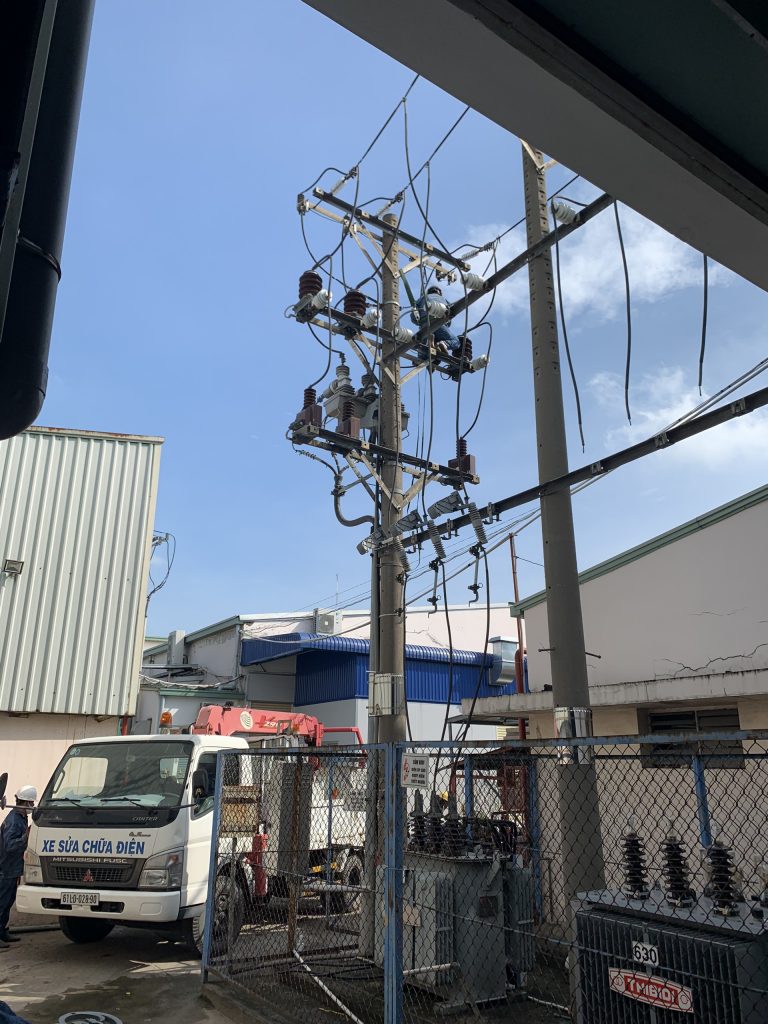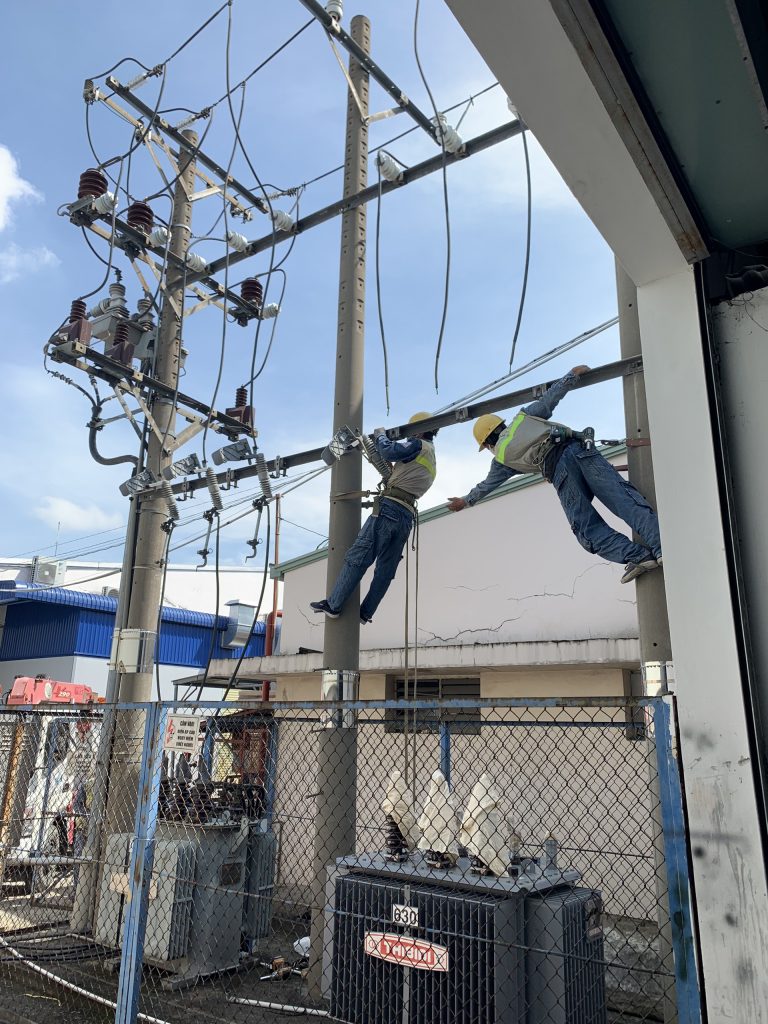Tin Tức
Detailed Understanding of 110kV Voltage Transformers in Electrical Systems
The 110kV voltage transformer plays a crucial role in the electrical system, helping to convert voltage from 110kV to lower voltage levels. It is often used for grid connection in small power plants and public distribution substations.
Overview of 110kV Transformer
The 110kV electrical transformer is a critical device in the electrical system, used to convert voltage from 110kV to distribution voltage levels like 35kV, 20kV, or 10kV. The capacity of the three-phase two-winding NLTC 110kV power transformer usually ranges from 10,000 to 63,000 kVA, with 31,500 kVA being the most common.
The 110kV transformer plays a vital role in ensuring efficient power transmission from power plants to consumption areas. The main feature of the 110kV transformer is voltage conversion, which improves transmission efficiency by minimizing power losses. Voltage from power plants is raised and transmitted through distribution stations, contributing to the stability of the power system.
Features and Functions of the 110kV Transformer
-
Voltage conversion: Important in enhancing power transmission efficiency.
-
Providing power for large areas: With capacity to supply electricity for large areas, meeting high consumption demands.
Construction of Transformer
-
Steel core: Made from thin steel with good magnetic conductivity.
-
Winding: Includes primary and secondary windings, ensuring connection between the power source and the consuming load.
-
Other components: Includes essential devices such as current transformers, capacitor-type voltage transformers, and lightning protection devices.
Performance and Benefits
-
Electrical transformer efficiency: Achieving nearly 100%, providing significant energy savings.
-
Durability: Manufactured according to international standards, extending lifespan and reducing maintenance costs.
-
Safety and efficiency: Equipment structure ensures safety for operators and other electrical devices.
Application of transformer and Development potential
The 110kV transformer is mainly installed outdoors, best serving large industrial and urban areas. This not only helps maintain a stable power source but also contributes to economic and infrastructure development.
- Impact on economy: Providing stable electricity creates a good foundation for attracting investment and local economic development.

Function and Structure of 110kV Substation
The 110kV substation is a substation with an installed capacity usually of 2×25 MVA. This type of substation functions to supply electricity to a large area, even a district. The structure includes transformers and distribution, protection equipment for the electrical system, reducing power loss and ensuring safety in electricity supply.
The 110kV substation plays an indispensable role in the power system, ensuring effective power transmission. By increasing and decreasing voltage, this station helps reduce power losses during transmission and distribution. This is very important in ensuring the stability and reliability of the power source, serving households and businesses in vast areas.
One of the economic benefits of the 110kV substation is its lower cost of investment and operation compared to other types of substations. Furthermore, the safety of station operation helps protect the power system and human safety.
Detailed Structure
- Transformer
- The transformer is the central device of the 110kV substation, tasked with converting voltage between levels to optimize power transmission efficiency. The structure of the transformer includes a steel core and primary, secondary windings. Reputable brands like ABB, Schneider are often used in this structure.
- Current Transformer
- This is an essential device that helps reduce alternating current, providing safe current for measurement and control purposes.
- Protective and Distribution Equipment
- Devices such as circuit breakers, reactors, and switches play an important role in protecting and distributing power, ensuring that system operation is stable and safe.
Location and Installation Conditions
The 110kV substation is often installed outdoors, on a large area and easily accessible for maintenance. Choosing the installation location requires consideration of factors such as low dust and ample space to ensure optimal operating conditions.

Standard and Operational Safety of 110kV Transformer
Transformer 110kV adheres to standards like GB1094.1, GB1094.2, GB1094.3, and GB1094.5. Important tests include insulation resistance checking, voltage ratio, and voltage tests. This ensures operational safety and high reliability for the electrical system.
The 110kV transformer plays a central role in the transmission and distribution of electricity in the power system. To ensure optimal transformer performance and maintain operational safety, adhering to strict technical standards and regulations is essential.
Technical Standards
The 110kV transformer is designed and manufactured to standard TCVN 6306-1:2015 (IEC 60076-1:2011), emphasizing high performance and outstanding durability. Technical factors such as constituent materials are also decisive, with the participation of high-quality materials such as silicon steel from Japan and Korea, copper wire from M1 copper, insulating oil from Sweden and the USA, along with insulation paper from Germany and Sweden.
The nominal voltage of the transformer is 110kV, with a voltage adjustment capability of about ±9%, allowing the supply voltage to be precisely adjusted as much as possible. Notably, these transformers achieve near-maximum operating efficiency, nearly 100%, aiming to minimize power losses during transmission.
Operational Safety
To ensure operational safety, the 110kV transformer systems are equipped with SCADA systems for remote monitoring and control, automating voltage adjustment and minimizing unwanted risks. Protective devices like relays and protection circuits are installed to quickly detect and handle incidents, providing maximum protection for the entire system.
Periodic evaluation of the transformer’s performance and reliability is also indispensable, helping to propose necessary improvements to optimize operation.
Structure and Objective
The 110kV substation includes essential components such as the main transformer, switching devices, circuit breakers, switches, measurement equipment, and protection systems. The primary objective of these substations is to ensure stable, continuous, and safe power supply for the load areas while saving operational costs.
Transformers are designed to operate in harsh environmental conditions, from 0°C to 45°C, with maximum humidity up to 100%, meeting international standards to ensure reliability under all conditions.
The 110kV transformer is not only a core component in power transmission and distribution but also a critical factor in ensuring the performance and safety of the entire electrical system.

The 110kV voltage transformer is a key element in the power system, providing superior technical and economic benefits. Optimizing use helps reduce power losses and increase operational safety.
Contact QuangAnhcons now for detailed consultation on 110kV transformer systems, ensuring effective investment and optimal operation. Hotline: 09 1975 8191.
QuangAnhcons provides professional optimization and installation services for 110kV voltage transformer systems, ensuring high quality and operational safety.